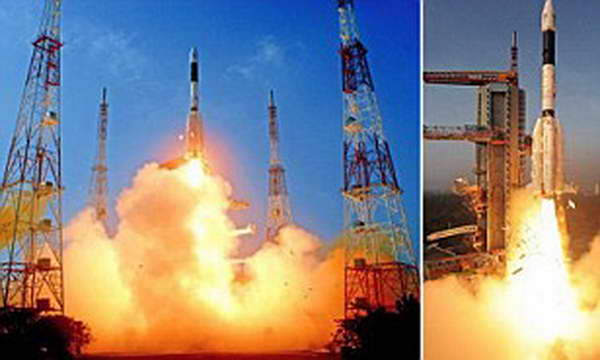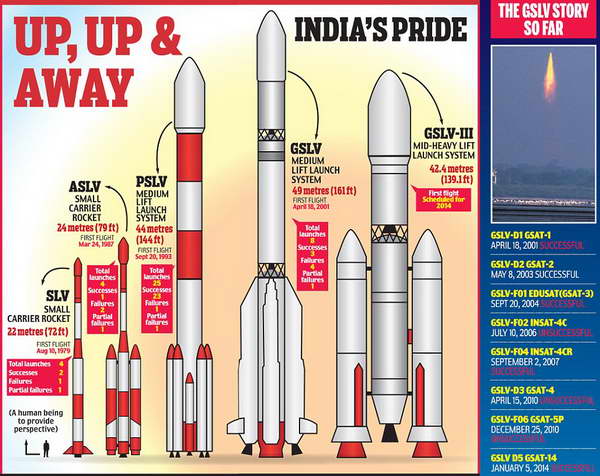Bangalore: In a major achievement, India’s geo-synchronous satellite launch vehicle (GSLV-D5) blasted off successfully from the Satish Dhawan Space Centre at Sriharikota on Sunday.
The GSLV-D5 with indigenous cryogenic engine successfully placed GSAT-14 communication satellite on orbit.
Speaking after the launch, ISRO Chairman K. Radhakrishnan said, “I am extremely happy and proud to say that ISRO has done it.”
Wasting no time, Prime Minister Manmohan Singh congratulated the ISRO team.
PM congratulates the scientists and engineers of ISRO for the successful launch of GSLV D5 carrying GSAT-14 payload, PMO tweeted soon after the successful launch.
“It is yet another important step that the country has taken in the area of science and technology,” Manmohan said, according to the post on Twitter.
When the Mars orbiter was successfully launched into Earth orbit on November 5 last year, BJP’s PM candidate and Gujarat CM Narendra Modi was the first one to congratulate the ISRO team.
With this, India joins an elite club of countries with the technology after a crash and a fuel leak on previous attempts.
Earlier, scientists were making final preparations for the launch of the rocket using a complex technology mastered by just a handful of countries, a top Indian Space Research Organisation (ISRO) official said.
The rocket weighs 415-tonne and carries a two-tonne advanced communications satellite, ISRO director Deviprasad Karnik said.
“Preparations for final countdown are going on normally to launch the 49-metre Geosynchronous Satellite Launch Vehicle (GSLV-D5) with our cryogenic engine at 4:18pm,” Karnik told AFP earlier.
The mission is India’s latest attempt to push further into the global market for launching commercial satellites. It comes after India successfully lifted a spacecraft into orbit in November aimed at travelling to Mars, as the country bids to become the first Asian nation to reach the Red Planet.
Sunday’s project has had to overcome several hurdles, including an aborted launch in August last year several hours before lift-off after a fuel leak was discovered in one of the rocket’s engines.
The first rocket crashed into the Bay of Bengal just minutes after take-off in April 2010 after the cryogenic engines failed to ignite.
“If we succeed this time, India will join a select club of space-faring nations with indigenous cryogenic engine capability to launch above two-tonne class satellites,” Karnik had said earlier.
The United States, Russia, France, Japan and China are among the countries to have successfully developed cryogenic boosters. “The twin purpose of this launch mission is to flight test once again our own cryogenic engine and put into the geostationary orbit a heavy communication satellite,” Karnik said.
It has taken ISRO scientists years to develop cryogenic motors after its bid to import the technology from Russia in 1992 failed because of opposition from the United States. The powerful booster technology, using super-cooled liquid fuel, is designed to put heavier satellites into high orbits, about 36,000 kilometres (22,000 miles) from Earth.
“A cryogenic rocket stage is more efficient and provides more thrust for every kilogram (kg) of propellant (fuel) it burns compared to other solid and liquid fuel stages,” Karnik said.
Since 2001, India has bought cryogenic engines from Russia and seven of them have been used on missions.
India first staked its claim for a share of the lucrative commercial satellite-launch market by sending an Italian satellite into orbit in 2007.
The government sees its low-cost space exploration programme as an achievement that underlines India’s emergence as a major world economy, and many citizens take great patriotic pride in its development.


